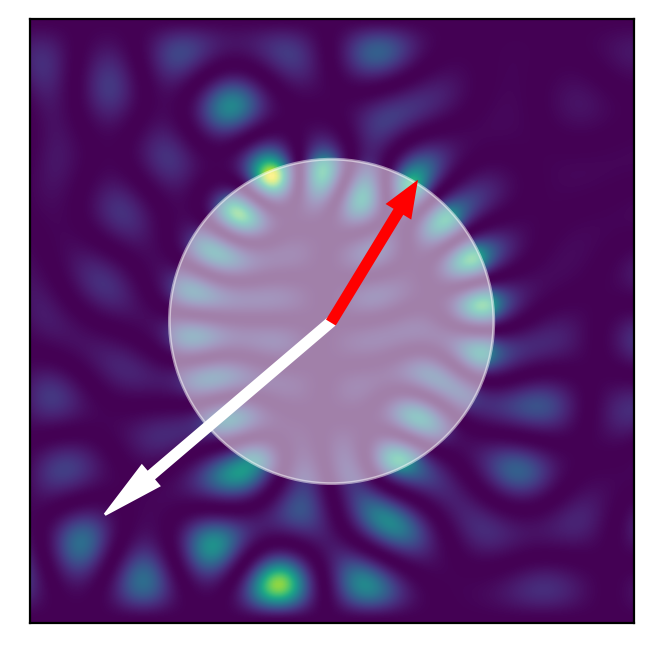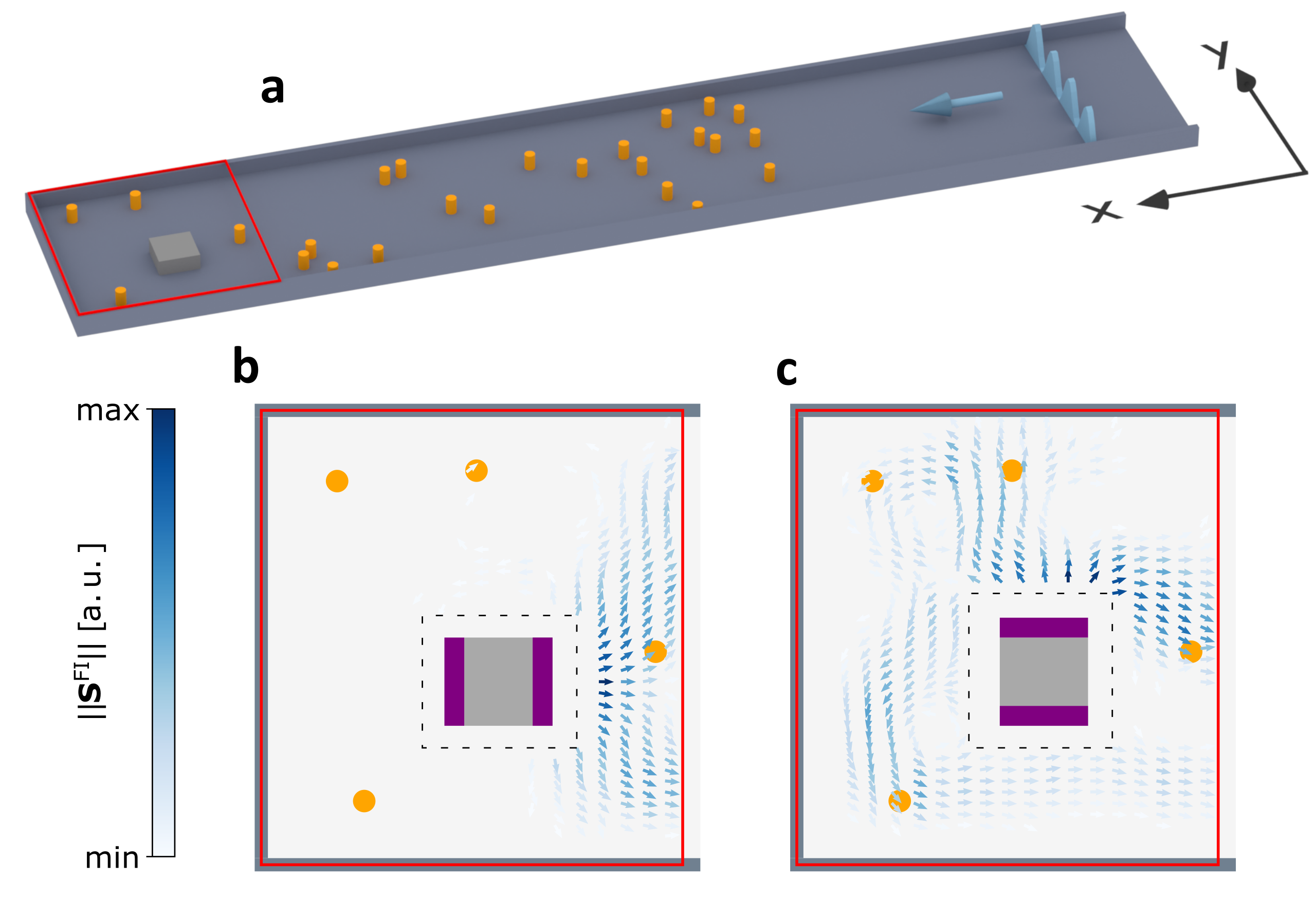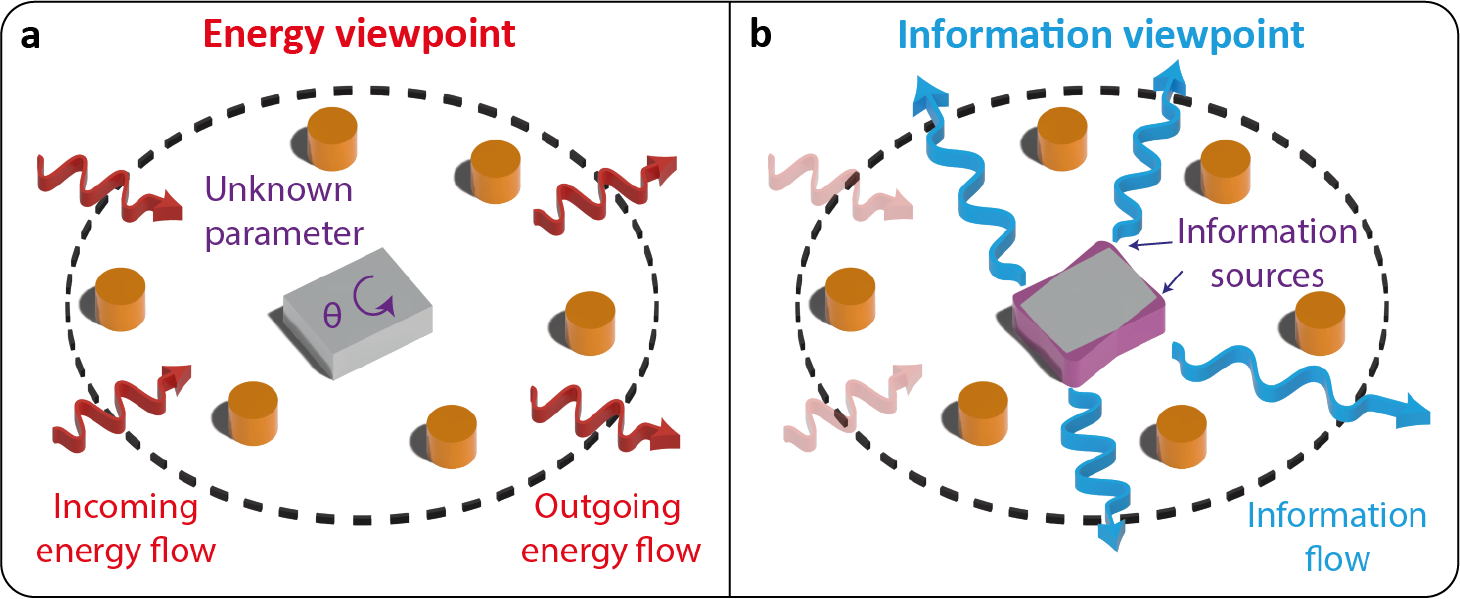I am a theoretical physicist interested in wave propagation in complex media, particle light interactions and the fundamental study of information conservation. My work focuses on the development of theoretical frameworks and the testing of them using numerical tools. I aim to connect my findings to experiments, serving both as a means of verification and fostering novel research directions through collaborations.
If you are interested in more details, please feel free to contact me.
Multi-Particle manipulation
Recent breakthroughs in levitated optomechanics[1] have highlighted the potential of optical micromanipulation for levitated nanoparticles. These particles have the potential for applications in a wide range of fields ranging from nano machines, macroscopic quantum mechanics to bio-physical imaging. Advances in the control of wavefronts have opened up the door to so far untapped potential contained in the spatial structure of the fields allowing for unmatched control of scattering patterns inside the system.



Building on these progress my work focuses on the control of multi-particle system by adaptive wavefront shaping and information control. In two recent publications my collaborators and I were able to show that [2][3] the information contained in the outgoing wavefronts are sufficient in accurately predicting if an incident wavefront increases or reduces the motion of the particles in the system. This allows us to define a “black box” cooling scheme, with good scaling properties, which could prove crucial in the control of multi particle systems.
Fisher information
Measuring physical observables with the highest precision possible has become a prime objective in fields ranging from gravitational wave detection to bio-imaging.
A key quantity for analyzing the information extraction in experiments is the Fisher information, which has become an important tool for optimizing experimental designs.


In my research I analyze how Fisher information manifests in nature and its connection to the limit of the achievable knowledge in any physical system. Quantifying and localizing information is key for the understanding how information is transferred from the sample that we want to measure towards the detectors. In light of this we were recently able to show that information is conserved during wave scattering processes by formulating a continuity equation [4] for Fisher information in close similarity to how the Poynting theorem describes the energy propagation.
References
- (2021): Levitodynamics: Levitation and control of microscopic objects in vacuum. In: Science, vol. 374, no. 6564, pp. eabg3027, 2021.
- (2023): Optimal cooling of multiple levitated particles: Theory of far-field wavefront shaping. In: Phys. Rev. A, vol. 107, no. 2, 2023, ISSN: 2469-9934.
- (2023): Optimal Cooling of Multiple Levitated Particles through Far-Field Wavefront Shaping. In: Phys. Rev. Lett., vol. 130, no. 8, 2023, ISSN: 1079-7114.
- (2024): Continuity Equation for the Flow of Fisher Information in Wave Scattering. In: Nature Physics, 2024.